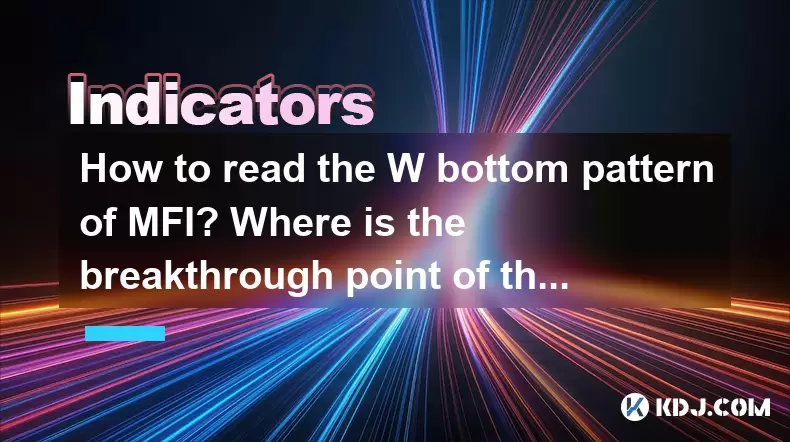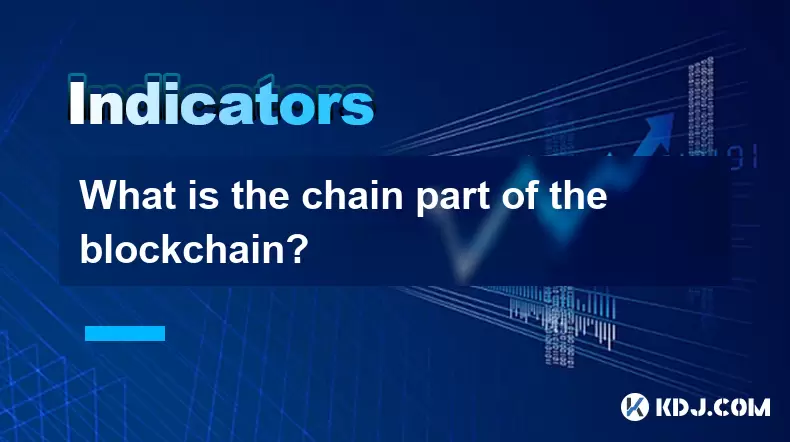-
 Bitcoin
Bitcoin $114400
0.68% -
 Ethereum
Ethereum $3550
2.48% -
 XRP
XRP $3.001
4.99% -
 Tether USDt
Tether USDt $0.9999
0.01% -
 BNB
BNB $757.6
1.46% -
 Solana
Solana $162.9
1.07% -
 USDC
USDC $0.9998
0.00% -
 TRON
TRON $0.3294
0.91% -
 Dogecoin
Dogecoin $0.2015
2.46% -
 Cardano
Cardano $0.7379
2.01% -
 Stellar
Stellar $0.4141
8.83% -
 Hyperliquid
Hyperliquid $37.83
-1.91% -
 Sui
Sui $3.454
0.76% -
 Chainlink
Chainlink $16.62
3.53% -
 Bitcoin Cash
Bitcoin Cash $554.6
2.84% -
 Hedera
Hedera $0.2486
3.91% -
 Ethena USDe
Ethena USDe $1.001
0.00% -
 Avalanche
Avalanche $21.95
3.34% -
 Toncoin
Toncoin $3.563
-2.85% -
 Litecoin
Litecoin $112.7
2.65% -
 UNUS SED LEO
UNUS SED LEO $8.977
0.13% -
 Shiba Inu
Shiba Inu $0.00001232
1.85% -
 Uniswap
Uniswap $9.319
2.93% -
 Polkadot
Polkadot $3.632
1.38% -
 Monero
Monero $307.2
2.36% -
 Dai
Dai $0.9997
-0.03% -
 Bitget Token
Bitget Token $4.340
0.91% -
 Pepe
Pepe $0.00001048
1.07% -
 Cronos
Cronos $0.1348
3.26% -
 Aave
Aave $261.5
1.93%
How to read the W bottom pattern of MFI? Where is the breakthrough point of the W bottom pattern?
The W bottom pattern on the MFI signals a bullish reversal; traders should enter when the MFI breaks above the recovery peak between the two troughs.
May 24, 2025 at 02:28 am

The Money Flow Index (MFI) is a popular technical indicator used by cryptocurrency traders to gauge the strength of money flowing in and out of an asset. One of the key patterns that traders look for in the MFI is the W bottom pattern. Understanding how to read this pattern and identifying the breakthrough point can significantly enhance your trading strategy. This article will delve into the intricacies of the W bottom pattern of the MFI and guide you through finding the breakthrough point.
Understanding the W Bottom Pattern
The W bottom pattern on the MFI chart is a bullish reversal pattern that indicates a potential shift from a bearish trend to a bullish one. This pattern is characterized by two distinct troughs that form the shape of the letter 'W'. The first trough represents an initial low point, followed by a recovery, and then another dip to form the second trough. The second trough should be slightly higher than the first, suggesting that selling pressure is diminishing.
To accurately identify a W bottom pattern, traders should look for the following key elements:
- First Trough: This is the initial low point on the MFI chart.
- Recovery Peak: After the first trough, the MFI rises to a peak.
- Second Trough: The MFI then falls again but does not reach the level of the first trough.
- Confirmation: The MFI must then rise above the recovery peak to confirm the pattern.
Identifying the Breakthrough Point
The breakthrough point of the W bottom pattern is crucial as it signals the confirmation of the bullish reversal. This point is where the MFI breaks above the recovery peak that was formed between the two troughs. Here's how to pinpoint the breakthrough point:
- Observe the Recovery Peak: Note the exact level of the recovery peak that forms after the first trough.
- Watch for the Second Trough: The MFI should form a second trough that is higher than the first trough.
- Monitor the MFI Rise: The breakthrough point occurs when the MFI rises above the level of the recovery peak.
For example, if the recovery peak after the first trough is at an MFI level of 50, the breakthrough point will be when the MFI moves above 50 after the second trough.
Practical Steps to Trade the W Bottom Pattern
Trading the W bottom pattern involves several steps to ensure you capitalize on the potential bullish reversal. Here's a detailed guide:
- Identify the Pattern: Use a charting tool to plot the MFI and look for the characteristic W shape.
- Confirm the Second Trough: Ensure the second trough is higher than the first, indicating weakening selling pressure.
- Set a Buy Order: Place a buy order just above the recovery peak to enter the trade as the MFI breaks through.
- Set a Stop Loss: Place a stop loss just below the second trough to manage risk.
- Monitor the Trade: Keep an eye on the MFI and the price action to ensure the bullish trend continues.
Using Additional Indicators for Confirmation
While the W bottom pattern on the MFI can be a strong signal, using additional indicators can enhance the reliability of your trading decisions. Some traders use the following indicators in conjunction with the MFI:
- Relative Strength Index (RSI): Look for similar patterns or divergence on the RSI to confirm the W bottom pattern on the MFI.
- Moving Averages: Use moving averages to identify the overall trend and confirm the bullish reversal.
- Volume: High volume during the breakthrough can confirm the strength of the bullish move.
Common Pitfalls and How to Avoid Them
Identifying and trading the W bottom pattern can be challenging, and there are several pitfalls that traders should be aware of:
- False Breakouts: Sometimes, the MFI may break above the recovery peak but fail to sustain the move. To avoid this, wait for a strong and sustained move above the peak.
- Premature Entries: Entering a trade before the breakthrough can lead to losses. Always wait for the MFI to break above the recovery peak before entering.
- Ignoring Market Context: The W bottom pattern should be considered in the context of the broader market trend. If the market is in a strong downtrend, the pattern may not be as reliable.
Real-World Examples of the W Bottom Pattern
To better understand how the W bottom pattern works in practice, let's look at a few real-world examples from the cryptocurrency market:
- Bitcoin (BTC): In early 2023, Bitcoin's MFI chart displayed a clear W bottom pattern. The first trough was at an MFI level of 20, followed by a recovery peak at 60. The second trough formed at 30, and the MFI broke above 60, confirming the bullish reversal. Traders who entered the trade at the breakthrough point saw significant gains as Bitcoin's price rallied.
- Ethereum (ETH): In late 2022, Ethereum's MFI chart showed a W bottom pattern with the first trough at 15, a recovery peak at 55, and the second trough at 25. The breakthrough above 55 confirmed the pattern, and Ethereum's price subsequently rose.
Frequently Asked Questions
Q: Can the W bottom pattern appear on other technical indicators besides the MFI?
A: Yes, the W bottom pattern can appear on other momentum indicators like the RSI or even on price charts. However, the interpretation and confirmation points may differ depending on the indicator used.
Q: How long does it typically take for the W bottom pattern to form and complete?
A: The duration can vary widely depending on market conditions. It can take anywhere from a few days to several weeks for the pattern to fully form and the breakthrough to occur.
Q: Is the W bottom pattern more reliable in certain market conditions?
A: The W bottom pattern tends to be more reliable in a market that is transitioning from a bearish to a bullish trend. It is less reliable during strong downtrends or in highly volatile markets.
Q: Can the W bottom pattern be used for short-term trading?
A: Yes, the W bottom pattern can be used for short-term trading, but traders should be cautious of false breakouts and use tight stop losses to manage risk effectively.
Disclaimer:info@kdj.com
The information provided is not trading advice. kdj.com does not assume any responsibility for any investments made based on the information provided in this article. Cryptocurrencies are highly volatile and it is highly recommended that you invest with caution after thorough research!
If you believe that the content used on this website infringes your copyright, please contact us immediately (info@kdj.com) and we will delete it promptly.
- Cryptocurrency, Altcoins, and Profit Potential: Navigating the Wild West
- 2025-08-04 14:50:11
- Blue Gold & Crypto: Investing Disruption in Precious Metals
- 2025-08-04 14:30:11
- Japan, Metaplanet, and Bitcoin Acquisition: A New Era of Corporate Treasury?
- 2025-08-04 14:30:11
- Coinbase's Buy Rating & Bitcoin's Bold Future: A Canaccord Genuity Perspective
- 2025-08-04 14:50:11
- Coinbase's Buy Rating Maintained by Rosenblatt Securities: A Deep Dive
- 2025-08-04 14:55:11
- Cryptos, Strategic Choices, High Returns: Navigating the Meme Coin Mania
- 2025-08-04 14:55:11
Related knowledge

What is a nonce and how is it used in Proof of Work?
Aug 04,2025 at 11:50pm
Understanding the Concept of a Nonce in CryptographyA nonce is a number used only once in cryptographic communication. The term 'nonce' is derived fro...

What is a light client in blockchain?
Aug 03,2025 at 10:21am
Understanding the Role of a Light Client in Blockchain NetworksA light client in blockchain refers to a type of node that interacts with the blockchai...

Is it possible to alter or remove data from a blockchain?
Aug 02,2025 at 03:42pm
Understanding the Immutable Nature of BlockchainBlockchain technology is fundamentally designed to ensure data integrity and transparency through its ...

How do I use a blockchain explorer to view transactions?
Aug 02,2025 at 10:01pm
Understanding What a Blockchain Explorer IsA blockchain explorer is a web-based tool that allows users to view all transactions recorded on a blockcha...

What determines the block time of a blockchain?
Aug 03,2025 at 07:01pm
Understanding Block Time in Blockchain NetworksBlock time refers to the average duration it takes for a new block to be added to a blockchain. This in...

What is the chain part of the blockchain?
Aug 02,2025 at 09:29pm
Understanding the Concept of 'Chain' in BlockchainThe term 'chain' in blockchain refers to the sequential and immutable linkage of data blocks that fo...

What is a nonce and how is it used in Proof of Work?
Aug 04,2025 at 11:50pm
Understanding the Concept of a Nonce in CryptographyA nonce is a number used only once in cryptographic communication. The term 'nonce' is derived fro...

What is a light client in blockchain?
Aug 03,2025 at 10:21am
Understanding the Role of a Light Client in Blockchain NetworksA light client in blockchain refers to a type of node that interacts with the blockchai...

Is it possible to alter or remove data from a blockchain?
Aug 02,2025 at 03:42pm
Understanding the Immutable Nature of BlockchainBlockchain technology is fundamentally designed to ensure data integrity and transparency through its ...

How do I use a blockchain explorer to view transactions?
Aug 02,2025 at 10:01pm
Understanding What a Blockchain Explorer IsA blockchain explorer is a web-based tool that allows users to view all transactions recorded on a blockcha...

What determines the block time of a blockchain?
Aug 03,2025 at 07:01pm
Understanding Block Time in Blockchain NetworksBlock time refers to the average duration it takes for a new block to be added to a blockchain. This in...

What is the chain part of the blockchain?
Aug 02,2025 at 09:29pm
Understanding the Concept of 'Chain' in BlockchainThe term 'chain' in blockchain refers to the sequential and immutable linkage of data blocks that fo...
See all articles

























































































